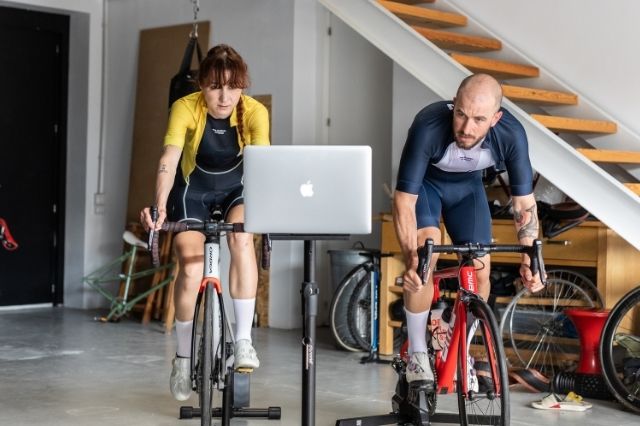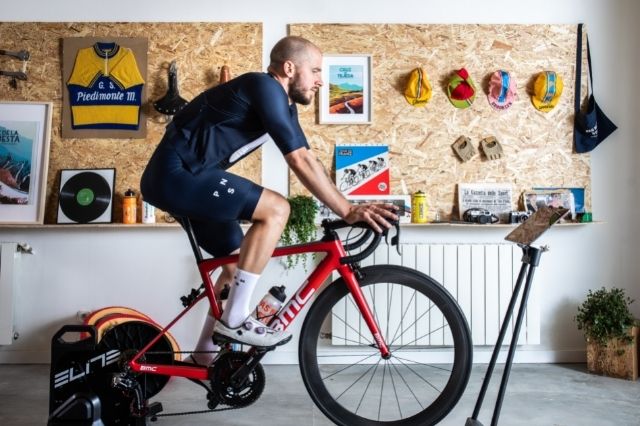Your Heart Rate is something you ought to bear in mind during your indoor training sessions in order to reach your proposed objectives and to improve your exercise. To help you with this, we are going to dedicate this post to explaining how you can work effectively on your Heart Rate.
Heart Rate: What is it and how is it Calculated
The Heart Rate (HR) is the number of heartbeats in a given timeframe, usually in a minute, as the unit of measurement is beats per minute (bpm).
This measurement is useful for controlling the intensity of aerobic exercise, such as Indoor Cycling, in particular during a strength test. And this is where the Maximum Heart Rate (MHR) comes into play, as this is the measurement used to set the percentage intervals.
The Maximum Heart Rate is the maximum number of heartbeats which can be reached in a strength test without putting your health at risk. The MHR varies according to a person’s age and gender. There are two formulas for calculating the MHR depending on a person’s gender:
Male:
- First option: 208.7 – (0.73 x age) = MHR
- Second option: [(210 – (0.5 x age)) – (0.01 x weight in kg) + 4] = MHR
Female:
- First option: 208.1 – (0.77 x age) = MHR
- Second option: [(210 – (0.5 x age)) – (0.01 x weight in kg)
Interval Training according to your MHR
Taking into account your previous exercise training, gender and age, amongst other factors, training intervals of your MHR are calculated, which you must bear in mind and work on in your Indoor Training.
50% – 60%: This interval is for those people who are starting to do exercise, due to the fact that it is advisable that they work at a lower percentage to get their body accustomed to training little by little. Likewise, this interval is suitable for a few minutes after a highly intense training session, so as not to stop abruptly.
60% – 70%: Recommended for those who already have a certain level of fitness and do not have any pre-existing physical conditions, and want to maintain a healthy and active lifestyle, and develop their aerobic capacity. If you want to do a recovery session, these are the percentages which you should be working at, never going over 70%.
70% – 80%: The training session carried out at these percentages allow you to improve your aerobic capacity and to develop your cardiovascular system, by improving your organism’s capacity to transport oxygen to your muscles and to collect carbon dioxide from your muscles.
80% – 90%: From 80% upwards, the anaerobic capacity is being trained because the body uses glycogen which is attached to the muscles as fuel, instead of using fat or carbohydrates as in the previous intervals.
When you train at such high percentages of Heart Rate the muscles consume more oxygen than the body is capable of producing, so it is important to train adequately at the previous intervals before attempting to reach higher intensity levels.
90% – 100%: These percentages of frequency can only be maintained for short training periods. At these parameters, the Fast-Twitch muscle fibres are worked, which helps to improve speed.
These recommendations are aimed at those who have a good level of fitness and who train at intervals with rest periods in between.
What advantages are there for training according to your Heart Rate (HR)?
- You get feedback on the exercise you have done: the HR helps you to evaluate the effort and load accumulated during the training session.
- Allows you to train intelligently: the HR informs you on the appropriate level of intensity and identifies the optimum training zone for you on each session, according to your objectives.
- Offers you a vision of your progress: after each session you can see the results, which motivates you to progress more.
- Helps to achieve your proposed objectives: calculating your HR enables you to observe your results and to overcome challenges.
- It is a great motivational tool: seeing your progress and development encourages you to carry on training.
- It can be used across all sports, not just in Cycling.
- Gives us a certain degree of safety so as not to go over the recommended limits, especially in cases of heart disease, high blood pressure, lower levels of fitness, and for the elderly.
In conclusion, the Heart Rate is an effective measurement to be able to know your level of fitness and your exercise progress, therefore, it is vital to take into account your Heart Rate during your indoor training sessions.










